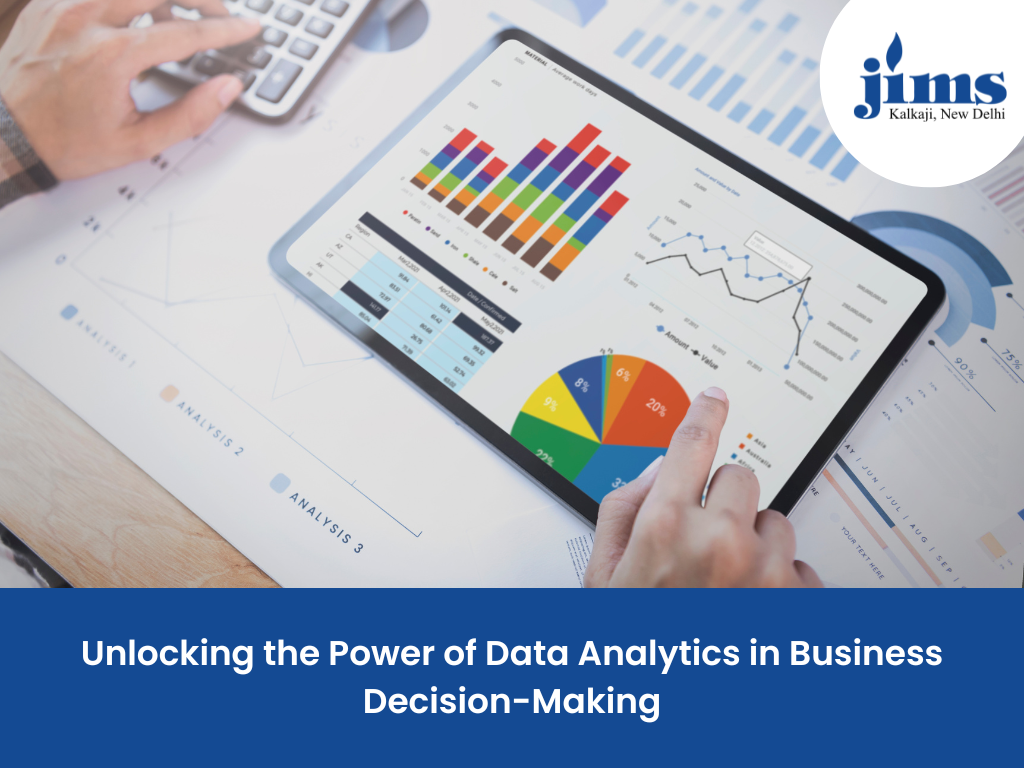P1]
In today’s data-rich environment, businesses are awash in information. From customer interactions and sales figures to operational metrics and market trends, the sheer volume of data can be overwhelming. However, buried within this data lies a treasure trove of insights that, when properly harnessed, can revolutionize decision-making, optimize operations, and drive competitive advantage. This is where business analytics (BA) comes into play.
Business analytics is the practice of iterative, methodical exploration of an organization’s data, with an emphasis on statistical analysis, predictive modeling, and optimization, to gain actionable insights and improve business performance. It goes beyond simply reporting on past performance; it aims to understand why things happened, predict what might happen in the future, and prescribe the best course of action.
Understanding the Landscape of Business Analytics
Business analytics encompasses a range of techniques and tools, each serving a specific purpose. These can be broadly categorized into:
Descriptive Analytics: This is the foundation of BA, focusing on summarizing and describing historical data to understand past performance. It answers the question, "What happened?" Tools like dashboards, reports, and data visualization are commonly used to present key performance indicators (KPIs), identify trends, and highlight anomalies. Examples include analyzing sales figures by region, tracking website traffic, and monitoring customer churn rates.
Diagnostic Analytics: Building upon descriptive analytics, diagnostic analytics delves deeper to understand the reasons behind past performance. It answers the question, "Why did it happen?" Techniques like data mining, correlation analysis, and root cause analysis are employed to identify the underlying factors influencing observed trends. For instance, understanding why sales declined in a particular region by analyzing competitor activity, pricing strategies, and customer feedback.

Predictive Analytics: This branch of BA leverages statistical models, machine learning algorithms, and historical data to predict future outcomes. It answers the question, "What will happen?" Predictive analytics is used for forecasting demand, predicting customer behavior, assessing risk, and identifying potential opportunities. Examples include predicting future sales based on historical data and market trends, identifying customers likely to churn, and predicting equipment failure to enable proactive maintenance.

Prescriptive Analytics: The most advanced form of BA, prescriptive analytics goes beyond prediction to recommend the best course of action to optimize business outcomes. It answers the question, "What should we do?" Techniques like optimization algorithms, simulation models, and decision analysis are used to identify the most effective strategies based on predicted outcomes and constraints. For example, optimizing pricing strategies to maximize revenue, recommending the optimal inventory levels to minimize costs, and suggesting personalized marketing campaigns to improve customer engagement.
The Business Benefits of Embracing Business Analytics
The adoption of business analytics offers a wide range of benefits across various functional areas of an organization. These benefits include:

Improved Decision-Making: By providing data-driven insights, BA empowers decision-makers to make more informed and strategic choices. It reduces reliance on gut feeling and intuition, leading to more effective and consistent decisions.
Enhanced Operational Efficiency: BA helps organizations identify bottlenecks, optimize processes, and improve resource allocation. By analyzing operational data, businesses can streamline workflows, reduce costs, and enhance productivity.
Increased Revenue and Profitability: BA enables businesses to identify new opportunities for revenue growth, optimize pricing strategies, and improve customer acquisition and retention. By understanding customer behavior and market trends, organizations can develop more effective marketing campaigns and product strategies.
Reduced Risk: BA helps organizations identify and mitigate potential risks. By analyzing historical data and identifying patterns, businesses can predict potential problems and take proactive measures to prevent them. This can include fraud detection, risk assessment, and supply chain disruption management.
Improved Customer Experience: By understanding customer needs and preferences, BA enables businesses to deliver personalized experiences and improve customer satisfaction. Analyzing customer data can help organizations identify pain points, personalize marketing messages, and provide better customer service.
Competitive Advantage: By leveraging data to gain insights and optimize operations, businesses can gain a significant competitive advantage. BA allows organizations to respond quickly to changing market conditions, identify new opportunities, and outperform their competitors.
Implementing Business Analytics: A Step-by-Step Approach
Successfully implementing business analytics requires a strategic and methodical approach. Here’s a step-by-step guide:
Define Business Objectives: Clearly define the business objectives you want to achieve with business analytics. What problems are you trying to solve? What opportunities are you trying to seize?
Identify Data Sources: Identify the relevant data sources that contain the information needed to address your business objectives. This may include internal data sources like CRM systems, ERP systems, and marketing automation platforms, as well as external data sources like market research reports, social media data, and industry databases.
Collect and Clean Data: Collect the data from the identified sources and clean it to ensure accuracy and consistency. This may involve removing duplicates, correcting errors, and standardizing data formats.
Analyze Data: Use appropriate analytical techniques to analyze the data and identify insights. This may involve using statistical analysis, data mining, machine learning, and data visualization tools.
Interpret Results: Interpret the results of the analysis and draw meaningful conclusions. Identify the key findings and their implications for the business.
Communicate Insights: Communicate the insights to relevant stakeholders in a clear and concise manner. Use data visualization and storytelling techniques to make the insights more accessible and engaging.
Implement Recommendations: Implement the recommendations based on the insights gained. This may involve making changes to business processes, marketing strategies, or product development efforts.
Monitor Results: Monitor the results of the implemented recommendations to ensure they are achieving the desired outcomes. Track key performance indicators (KPIs) and make adjustments as needed.
Challenges in Business Analytics Implementation
While the benefits of business analytics are undeniable, organizations often face challenges during implementation. Some common challenges include:
Data Quality Issues: Poor data quality can significantly impact the accuracy and reliability of analytical insights. Addressing data quality issues requires investment in data governance, data cleansing, and data validation processes.
Lack of Skilled Resources: Implementing and managing business analytics requires skilled professionals with expertise in data analysis, statistical modeling, and data visualization. Organizations may need to invest in training and development or hire experienced data scientists and analysts.
Resistance to Change: Implementing business analytics can require significant changes to business processes and decision-making processes. Overcoming resistance to change requires effective communication, training, and stakeholder engagement.
Integration Challenges: Integrating business analytics tools and data sources with existing IT infrastructure can be complex and challenging. Organizations may need to invest in new technologies and expertise to ensure seamless integration.
Data Security and Privacy Concerns: Business analytics often involves handling sensitive data, raising concerns about data security and privacy. Organizations must implement robust security measures and comply with relevant data privacy regulations.
The Future of Business Analytics
The field of business analytics is constantly evolving, driven by advancements in technology and the increasing availability of data. Some key trends shaping the future of business analytics include:
Artificial Intelligence (AI) and Machine Learning (ML): AI and ML are increasingly being used to automate analytical tasks, improve prediction accuracy, and uncover hidden patterns in data.
Big Data Analytics: The ability to analyze large and complex datasets is becoming increasingly important as organizations generate more and more data.
Cloud-Based Analytics: Cloud-based analytics platforms offer scalability, flexibility, and cost-effectiveness, making them an attractive option for organizations of all sizes.
Real-Time Analytics: The ability to analyze data in real-time is becoming increasingly important for organizations that need to make quick decisions based on current events.
Augmented Analytics: Augmented analytics uses AI and ML to automate the data preparation, analysis, and insight generation processes, making analytics more accessible to non-technical users.
Conclusion
Business analytics is no longer a luxury; it is a necessity for organizations that want to thrive in today’s competitive environment. By leveraging data to gain insights, optimize operations, and improve decision-making, businesses can achieve significant improvements in performance and gain a sustainable competitive advantage. While implementing business analytics can be challenging, the potential benefits are well worth the effort. As technology continues to evolve and the volume of data continues to grow, business analytics will become even more critical for success.
FAQ: Business Analytics
Q: What is the difference between Business Intelligence (BI) and Business Analytics (BA)?
A: While often used interchangeably, BI and BA have distinct focuses. BI primarily focuses on reporting past performance ("What happened?") and uses tools like dashboards to visualize data. BA, on the other hand, delves deeper, aiming to understand why things happened (Diagnostic Analytics), predict future outcomes (Predictive Analytics), and recommend the best course of action (Prescriptive Analytics). Think of BI as the foundation and BA as the advanced analysis built upon that foundation.
Q: What skills are needed for a career in Business Analytics?
A: Key skills include:
- Technical Skills: Data analysis, statistical modeling, programming (e.g., Python, R), database management (SQL), data visualization (e.g., Tableau, Power BI).
- Business Acumen: Understanding business processes, financial concepts, and industry trends.
- Communication Skills: Effectively communicating complex analytical findings to non-technical audiences.
- Problem-Solving Skills: Identifying and defining business problems, developing analytical solutions, and interpreting results.
- Critical Thinking: Evaluating data, identifying biases, and drawing logical conclusions.
Q: What types of industries benefit from Business Analytics?
A: Virtually every industry can benefit from BA. Examples include:
- Retail: Optimizing pricing, personalizing marketing, managing inventory.
- Healthcare: Improving patient care, reducing costs, predicting disease outbreaks.
- Finance: Detecting fraud, assessing risk, managing investments.
- Manufacturing: Optimizing production processes, predicting equipment failure, managing supply chains.
- Marketing: Optimizing marketing campaigns, improving customer engagement, identifying new opportunities.
Q: How much does it cost to implement Business Analytics?
A: The cost of implementing BA can vary widely depending on the scope of the project, the complexity of the data, and the tools and resources required. Factors influencing the cost include:
- Software and Hardware: Cost of data analytics platforms, database management systems, and hardware infrastructure.
- Data Integration: Cost of integrating data from various sources.
- Consulting and Training: Cost of hiring consultants and training employees.
- Data Quality Improvement: Cost of cleaning and validating data.
Q: What are some popular Business Analytics tools?
A: Some popular tools include:
- Tableau: Data visualization and business intelligence platform.
- Power BI: Microsoft’s data visualization and business intelligence platform.
- Python: Programming language with powerful data analysis libraries (e.g., Pandas, NumPy, Scikit-learn).
- R: Programming language specifically designed for statistical computing and graphics.
- SQL: Language used for managing and querying databases.
- SAS: Statistical analysis software.
- IBM SPSS: Statistical analysis software.
- Google Analytics: Web analytics service for tracking website traffic and user behavior.
Q: How can I get started with Business Analytics?
A: Here are a few ways to get started:
- Take Online Courses: Platforms like Coursera, edX, and Udacity offer courses on various aspects of business analytics.
- Read Books and Articles: Stay up-to-date on the latest trends and best practices in business analytics.
- Practice with Real-World Datasets: Find publicly available datasets and use them to practice your analytical skills.
- Attend Workshops and Conferences: Network with other professionals in the field and learn from their experiences.
- Consider a Certification Program: Earning a certification can demonstrate your knowledge and skills to potential employers.
By understanding the principles, techniques, and benefits of business analytics, organizations can unlock the power of their data and drive significant improvements in performance. The journey to becoming a data-driven organization requires commitment, investment, and a strategic approach, but the rewards are well worth the effort.




Leave a Reply